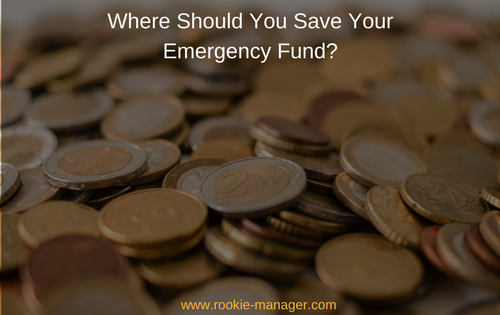Where Should You Save Your Emergency Fund?
When I shared about my losing my #52WeekChallenge savings on the Telegram Group, one of the participants asked me a challenging question:
Don’t you have an emergency fund?
See how wonderful accountability is?
We all know that an emergency fund is Personal Finance 101. When you start earning money, first thing you should do is build up a fund of at least 3 months of your monthly expenses. This fund is supposed to cover you in an emergency or should you lose your job. Building an emergency fund is prioritized even over paying off debt because it helps you avoid getting further into debt.
Where should this emergency fund be kept / saved?
Many people get stuck at this point (analysis-paralysis), and end up in a save-spend cycle. An emergency fund should be accessible enough when you need it, without it being too available for impulse spending. Your regular bank account is out of the question. There is however no universal answer for what is ideal, and this is one of the areas where personal finance is indeed personal, just like how to manage money in a marriage
People opt for a number of options:
1.A savings account with limited accessibility. Some banks will allow you to have a savings account that is free of all charges, with 4 free withdrawals a year, and a charge if you make withdrawals within the quarter. Some people who have the discipline to not withdraw unnecessarily opt to keep a portion of their emergency fund in this kind of account. The disadvantage of a savings account is that the interest / return on your funds is quite low. In Kenya currently, they are paying 7%, which is barely above our inflation rate.
2. Investing in a money market fund. The beauty of money market funds is that their return rate is usually 3-4% higher than a bank savings account, with close to the same level of liquidity. Some money market funds will allow you to cash out within 24 hours, most within 3-5 working days. If you opt to go for a money market fund, ensure that you re-invest any interest earnings, so you can take advantage of the compounding.
3. Investing in government instruments (treasury bills or bonds). Treasury bills are usually short term, with tenors of up to 360 days, while treasury bonds can be as long as 25-30 years. An example of a bond is the M-Akiba bond whose second issue is currently ongoing. Treasury bills’ interest rates are usually 1-1.5% higher than savings account rates and they are fairly liquid, while bonds are slightly higher than money market funds, but are not liquid, unless you sell the bond in the stock market. Again if you opt for this option, re-invest all your gains to keep growing the funds.
3. A SACCO or a soft credit facility. This is my method of choice. My emergency fund is currently in a friendly SACCO, and a friendly table bank that is made up of family members. There are two main reasons why I opted for this:
- I suck at keeping cash. Money always finds things to do, from the noble (investments and giving), to the fickle (going on random holidays and buying stuff). For this reason, me having my emergency fund in a fairly liquid form is equivalent to not having an emergency fund at all. The two avenues allow me access to an emergency fund when a real emergency happens, and protect the money from the fake emergencies, which happen often!
- Having the money in a pool enables it to earn an interest/dividend income, while it is accessible to others who might need to borrow for various reasons. This is the mission of our table bank.
The beauty of both the SACCO and the table bank is that should an emergency happen, I am able to borrow the equivalent of my savings without a co-signer, and 3 times my savings, with a co-signer. Once the emergency need has passed, I know I will be more faithful to repay the loan, than I would be in re-building a fund if I liquidated it.
In conclusion, you should align personal finance principles to your personality. Some people are great at handling cash without overspending or impulse buying, while others are not. Some of us are comfortable with debt, while others are not. Ultimately, do not let a recommended method of saving keep you away from building savings, find a workaround that aligns to your money personality.
Remember, it is not too late to join the #52WeekChallenge. It is an easy way to start building your emergency savings, and doing so with M-Shwari Lock Savings means that you can save small amounts you would otherwise spend and watch your money grow. Then at the end of the year, you can incorporate the cash into your emergency funding.





3 Comments